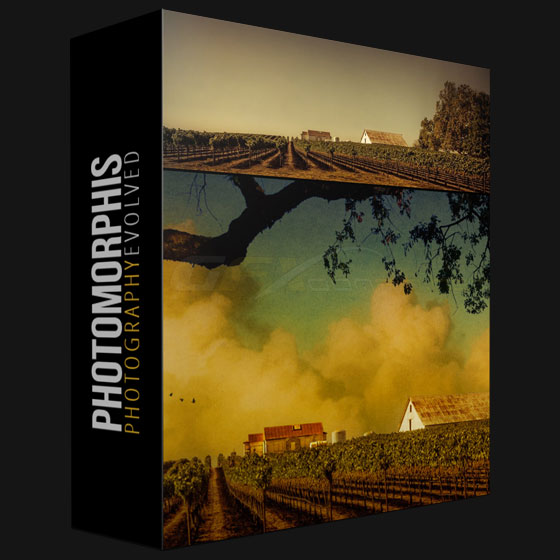
This tutorial has everything you need to create a rich Maxfield-Parrish-inspired landscape and learn advanced Photoshop compositing techniques.
Topics Covered:
Using actions in a workflow
Working with smart objects
Using colors and tones to make accurate selections and masks
Fine tuning masks
Composite sky/background
- “Place new image on layer -Multiply” places a new image as a smart object onto a new layer, centered and sized to fit inside the current document. After confirming the placement, the action sets the blend mode to multiply and reactivates the free transform command to make it easy to move and scale the new image over the existing image.
- “Mask out bright sky” works to create a mask based on the blue channel in the image. This works for images that have clear blue skys where you’d like to eliminate the sky and keep what’s silhouetted against it. There is a good chance that the mask will need to be adjusted further, but this is often a real time saver for images with a clear blue sky.
- “Dupe layer soft100 over Mult65” is a quick way that I like to apply texture layers. After bringing in a texture file and scaling it, (possibly using the 1st action), this will create a duplicate layer set to soft light at 100% opacity over the top of the original layer which will be set to Multiply at 65% opacity. This is a good start to applying textures… and is of course modifiable by changing the opacities and blend modes further, but is one of my favorite ways to start with a texture.
- “Add Dodge Burn layer” will add a layer filled with 50% grey set to overlay blending mode and name it DB. This is useful for dodging and burning the underlying layers in a non-destructive way.
- “Convert to Smart Object” is just a quick action to convert an image layer, or group, or multiple layers into a smart object without having to use the menu commands.
https://www.anonymz.com/?https://photomorphis.com/store/learning/pro-tutorial-channeling-maxfield-parrish/
Download Links:-

Photomorphis_-_Channeling_Maxfield_Parrish.part1.rar
Photomorphis_-_Channeling_Maxfield_Parrish.part2.rar
Mirror :-

https://nitroflare.com/view/738202A40DB2F86/Photomorphis_-_Channeling_Maxfield_Parrish.part1.rar
https://nitroflare.com/view/43C750E591780BF/Photomorphis_-_Channeling_Maxfield_Parrish.part2.rar
